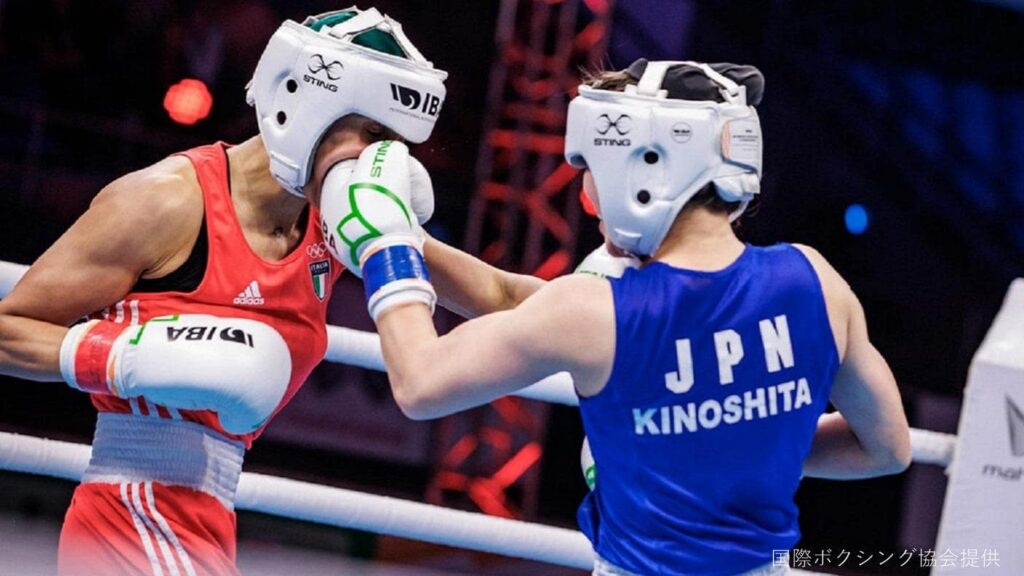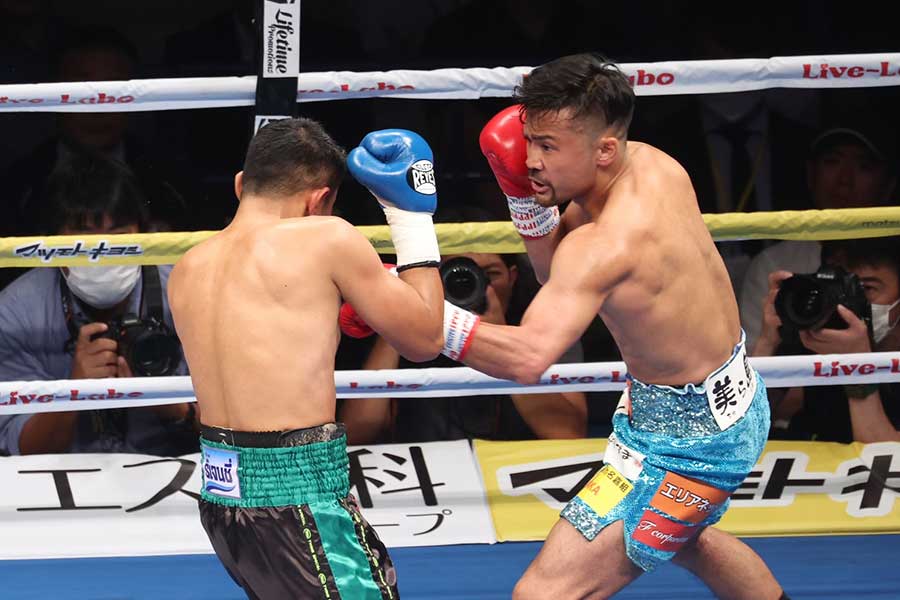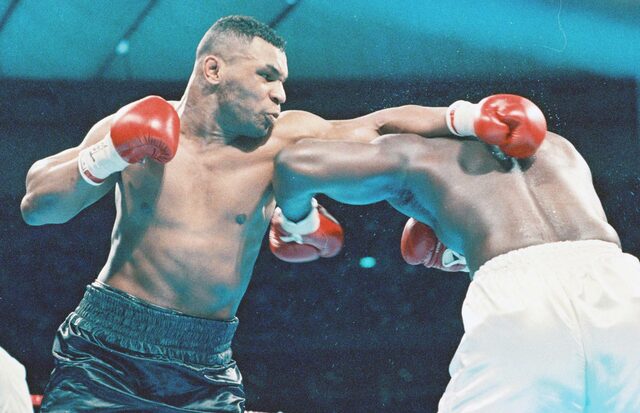
Boxing is a full-body exercise, and it’s common to feel sore the next day, especially for beginners.
This muscle soreness is usually caused by your body not getting used to the new exercise, but its effects can be greatly reduced if you know the right measures and precautions.
In this article, we will delve into the causes of muscle soreness in boxing, provide a detailed explanation of specific methods to relieve pain and promote early recovery, and effective approaches to prevent muscle soreness.
We will share the secrets to enjoying boxing without worrying about muscle pain, using real-life experiences and advice from experts.
目次
- 1 Boxing and muscle soreness: why does it happen?
- 2 Areas prone to muscle pain from boxing
- 3 Heal muscle pain quickly: effective immediate measures
- 4 How to prevent muscle pain: stretching and nutrition before and after boxing
- 5 Learn from real experience: Boxing training methods to overcome muscle pain
- 6 Experts teach you: Techniques to reduce muscle soreness after boxing
- 7 summary
Boxing and muscle soreness: why does it happen?
Boxing is a physically and mentally demanding exercise, and due to its high intensity, muscle soreness is common.
The following factors are involved in the main reasons why this muscle pain occurs:
Minor muscle damage due to exercise
Boxing involves intense physical activity, including punching, footwork, and dodging movements.
These movements can cause microscopic damage to muscle fibers, and the body becomes inflamed in the process of repairing this damage, resulting in muscle pain.
This is a common cause of post-exercise soreness (delayed muscle soreness) and is often seen after trying a new exercise or training harder than usual.
Accumulation of muscle fatigue substances
During intense exercise, muscles burn sugar and fat for energy, but this process produces a fatigue substance called lactic acid.
Lactic acid temporarily accumulates in the muscles, and if the oxygen supply to the muscles cannot keep up, it can cause pain and fatigue.
However, by properly cooling down and stretching after exercise, this lactic acid is eliminated from the body relatively quickly, which is effective in preventing muscle pain.
muscle overuse
The repetitive use of certain muscle groups in boxing can cause muscle overuse.
This is especially true for beginners who haven’t learned proper form or who continue training without getting enough rest.
Overuse of muscles increases the risk of chronic pain and injury, so it’s important to have a proper training plan and ensure you get enough rest.
For these reasons, muscle soreness after boxing is part of the body’s natural process of adapting to new exercise and building stronger, more durable muscles.
If pain occurs, it is important to allow an appropriate recovery period and adjust the intensity of training as necessary.

Areas prone to muscle pain from boxing
Boxing is a full-body exercise, and muscle soreness often occurs in specific areas.
Below are the main areas that are prone to muscle pain during boxing.
1. Shoulders and arms
- Boxing involves a lot of punching, which can easily cause muscle pain in the shoulders and upper arms . In particular, continuous punching movements such as jabs and straights place a large load on the muscles around the shoulders.
2. Back
- To increase the power of your punches, it is important to use your back muscles, especially your lats . Rotating when punching and maintaining posture when guarding puts strain on the back muscles, making them more likely to develop muscle pain.
3. Abdomen
- In boxing, the abdominal muscles play an important role in punching and dodging . In addition, the abdominal muscles tend to be overworked as the guard is strengthened to prevent blows to the abdomen.
4. Legs and buttocks
- Leg muscles and glute muscles are very important for effective footwork and punching . These muscles form the basis of movement and support punching power, stamina, and balance. The muscles of the legs, especially the quadriceps , hamstrings , and calf muscles, are prone to fatigue and muscle pain during long training sessions.
If you experience muscle pain in these areas, it’s important to get proper rest, nutrition, and use the muscle pain relief techniques mentioned above.
Muscle soreness can speed up recovery if treated appropriately.

Heal muscle pain quickly: effective immediate measures
Muscle soreness after boxing can be caused by a variety of factors, including training intensity and adapting to a new exercise routine.
To quickly heal muscle pain, quick-acting measures are effective. Below are practical ways to relieve muscle pain fast.
cooling and icing
- Cooling : Cooling down immediately after exercise reduces muscle inflammation and prevents muscle soreness. Cold baths and cold showers are effective.
- Icing : For particularly painful areas, apply an ice pack or frozen pack wrapped in a towel for about 20 minutes to reduce pain and swelling.
proper rest and sleep
- Adequate rest is necessary for muscle repair and recovery. Proper rest will help your sore muscles recover. Also, getting good quality sleep can promote muscle repair and relieve muscle pain.
stretching and light exercise
- Stretching : Even when you have sore muscles, gentle stretching can improve muscle flexibility and increase blood flow.
- Light exercise : Low-intensity exercise, such as light jogging or walking, can improve blood flow and help sore muscles heal.
nutrition and hydration
- Proper nutrition is necessary for muscle repair. In particular, make sure to eat a diet rich in protein, vitamins, and minerals. Hydration also maintains normal metabolic function in the body and promotes recovery from muscle soreness.
Massage
- Massage, which works directly on the muscles, relieves muscle stiffness and promotes blood flow, speeding recovery from muscle pain. We recommend self-massage or treatment by a professional massage therapist.
By taking these measures appropriately, you can quickly relieve muscle pain after boxing and lead to early recovery.
The important thing is to listen to your body and take appropriate care without overdoing it.

How to prevent muscle pain: stretching and nutrition before and after boxing
Boxing is a full-body exercise, and preventing muscle soreness is an important part of maximizing your training results and reducing your risk of injury.
Stretching before and after boxing and proper nutrition are effective ways to prevent muscle soreness. We will explain how to do this in detail below.
Stretching before and after boxing
Warm up before boxing
- Full-body stretches : Stretching before exercise warms up your muscles and increases flexibility, which helps prevent injury. In particular, we focus on the muscles of the shoulders, arms, legs, and back, which are important for boxing.
- Dynamic stretches : Dynamic stretches, such as shoulder rotations, arm swings, and knee raises, improve blood flow and prepare your body for movement.
Cool down after boxing
- Static Stretching : Perform static stretches after exercise while your muscles are still warm to release tension and maintain flexibility. Stretching after exercise can help reduce muscle soreness and speed up recovery.
Importance of nutritional intake
protein
- Protein is needed for muscle repair and growth. After boxing training, it’s a good idea to consume protein-rich foods such as chicken, fish, tofu, and protein shakes.
carbohydrates
- Carbohydrates provide a source of energy used during exercise. Eat a balanced diet of healthy carbohydrates such as whole grains, fruits, and vegetables.
hydration
- It’s important to drink plenty of water before and after training to compensate for fluid loss from exercise. Dehydration can lead to decreased performance and muscle pain.
vitamins and minerals
- Vitamins C and E have antioxidant properties and aid in muscle recovery. Additionally, minerals such as potassium and magnesium support muscle function and help prevent muscle pain.
Proper stretching and nutritional intake before and after boxing are important not only to prevent muscle soreness, but also to enhance the effectiveness of your training and maintain your physical condition.
By taking these basic cares on a daily basis, you can continue boxing more safely and enjoyably.

Learn from real experience: Boxing training methods to overcome muscle pain
Muscle soreness during boxing training is inevitable, but with effective training methods and proper care, its effects can be minimized.
Here, we will introduce training methods to overcome muscle pain, based on actual experience.
proper warm up
Warming up before starting boxing is very important. By slowly warming up the muscles throughout the body, you reduce the risk of injury and suppress the occurrence of muscle pain.
Prepare your body properly by jogging, skipping, or doing some light shadow boxing for about 10 minutes.
progressive overload
Apply the principle of ‘progressive overload’, which gradually increases the intensity or volume of your training.
Exercising too quickly can put a huge strain on your muscles, leading to muscle pain and injury. It is important to start with a light intensity and gradually increase the intensity.
have variations
Repeating the same exercise over and over puts undue stress on certain muscles, making muscle soreness worse.
By varying the types of punches you throw and incorporating footwork drills, you can work different muscle groups evenly.
Also, incorporating cross-training (e.g. swimming, cycling, etc.) can help your muscles recover and balance your entire body.
Stretching and cooling down for recovery
Cooling down and stretching after a workout is very effective in reducing muscle soreness and speeding recovery.
After exercising, be sure to stretch thoroughly, especially focusing on overworked muscle groups.
Stretching increases blood flow and relieves muscle tension.
nutrition and hydration
Proper nutrition is essential for muscle repair and growth. In particular, protein is an essential nutrient for muscle repair.
After your workout, eat a protein-rich meal or a protein shake to support muscle recovery.
It is also important to remember to stay hydrated during your training.
By incorporating these training methods based on real-life experiences, you can effectively manage muscle soreness in boxing and improve the quality of your training.
The important thing is to listen to your body.
The key to overcoming muscle soreness and getting the most out of your training is to not push yourself too hard, listen to your body, and ensure proper training, nutrition, and rest.

Experts teach you: Techniques to reduce muscle soreness after boxing
Expert post-boxing muscle soreness reduction techniques have a scientifically based approach and unique methods devised from years of training experience.
By utilizing these techniques, it is possible to accelerate recovery after boxing and effectively reduce muscle soreness.
1. Active recovery
Experts recommend active recovery the day after an all-out workout.
This is a way to increase blood flow and speed up muscle recovery through very light exercise. For example, light jogging, walking, or stretching can help.
2. Proper nutrition
Nutritional intake is extremely important during the recovery period.
In particular, it is recommended to eat a well-balanced intake of protein, which is necessary for muscle repair, foods rich in omega-3 fatty acids, which reduce inflammation, and complex carbohydrates, which provide energy for muscles.
3. Stay hydrated
Loss of fluid and electrolytes through sweating during exercise can contribute to muscle soreness.
It is important to compensate for these losses and maintain normal muscle function through adequate hydration. In addition to water, sports drinks containing electrolytes are also effective.
4. Improved sleep quality
Sleep is essential for muscle recovery and regeneration. Getting enough sleep promotes the secretion of growth hormone and speeds recovery from muscle soreness.
Experts recommend sticking to a consistent bedtime to ensure quality sleep.
5. Cold therapy
Cooling with ice baths or cold packs can reduce muscle inflammation and relieve muscle pain.
In particular, rapid cooling immediately after exercise can help reduce the occurrence of inflammation.
These techniques can effectively reduce muscle soreness caused by intense boxing training and help maintain the quality of your training.
It is important to incorporate these techniques into your daily training, listening to the advice of experts and paying attention to what your body is telling you.

summary
Effective ways to deal with muscle soreness and promote recovery after boxing include a proper warm-up, application of progressive overload principles, training variations, proper cool-down and stretching, nutrition and hydration. Includes supplies.
These approaches can help reduce the occurrence of muscle soreness and help muscles recover faster.
- Warming up and cooling down properly prepare your muscles and promote post-workout recovery.
- Progressive overload gradually increases the intensity of your training, allowing your body to adapt and reducing muscle soreness.
- Training variations avoid overstraining certain muscles and improve overall body balance.
- Proper nutrition and hydration are essential for muscle repair and recovery.
- Improved sleep quality and cold therapy can help reduce muscle soreness and speed recovery.
These practices are recommended as a regular part of your training as they will help you get the most out of your boxing training and manage muscle soreness.
Listening to your body, not pushing yourself too hard, and creating an appropriate training plan are the keys to overcoming muscle pain and continuing to train in a healthy manner.





